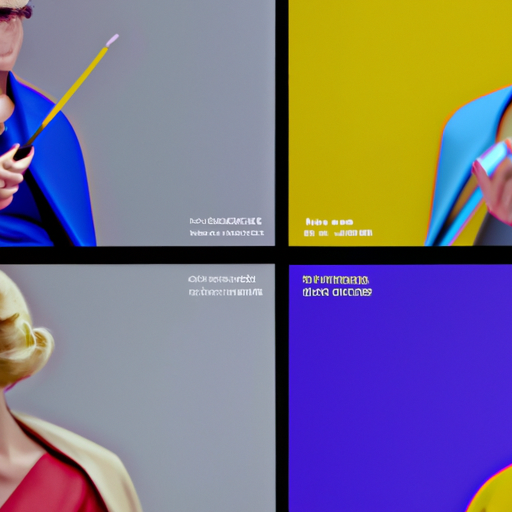
-
Table of Contents
The Art of Storytelling: Incorporating Narratives in Design

Storytelling has been an integral part of human culture for centuries. From ancient cave paintings to modern-day films, stories have captivated and inspired people throughout history. In recent years, the art of storytelling has found its way into the world of design, creating a powerful tool for designers to engage and connect with their audience. In this article, we will explore the importance of incorporating narratives in design and how it can enhance the user experience.
The Power of Storytelling
Stories have a unique ability to evoke emotions, create connections, and leave a lasting impact on individuals. When applied to design, storytelling can transform a simple product or service into a memorable experience. By weaving narratives into the design process, designers can engage users on a deeper level, making their designs more relatable and meaningful.
One example of successful storytelling in design is the Nike+ Running app. Instead of just providing users with basic tracking features, Nike+ Running incorporates a narrative element by allowing users to set goals, track their progress, and compete with friends. The app tells a story of personal growth and achievement, motivating users to push themselves further. As a result, Nike+ Running has gained a loyal user base and has become one of the most popular running apps in the market.
Creating a Narrative in Design
Integrating storytelling into design requires careful planning and consideration. Here are some key steps to create a compelling narrative in design:
- Define your audience: Before crafting a narrative, it is essential to understand your target audience. Research their needs, desires, and preferences to create a story that resonates with them.
- Identify the purpose: Determine the purpose of your design and how a narrative can enhance it. Whether it’s to educate, entertain, or inspire, aligning the narrative with the design’s purpose is crucial.
- Develop characters: Characters play a vital role in storytelling. Create relatable characters that users can connect with and root for. These characters can be represented through visuals, illustrations, or even through the design itself.
- Establish a plot: Every good story has a plot. Define the journey or experience you want to take your users on. This could be a problem-solving process, a transformational journey, or a series of challenges and rewards.
- Use visuals and multimedia: Visual elements such as illustrations, animations, and videos can enhance the storytelling experience. Incorporate these elements strategically to support and enhance the narrative.
- Create a cohesive user journey: Design the user experience in a way that guides users through the narrative seamlessly. Consider the flow, transitions, and interactions to ensure a cohesive and immersive experience.
Case Studies: Successful Storytelling in Design
Several companies have successfully incorporated storytelling into their design, resulting in memorable and impactful experiences. Let’s explore a few case studies:
1. Airbnb
Airbnb, the popular online marketplace for vacation rentals, has mastered the art of storytelling in design. Their website and app feature captivating visuals and narratives that transport users to different destinations. By showcasing unique and personal stories of hosts and guests, Airbnb creates an emotional connection with its users, making them feel like they are part of a global community.
2. Mailchimp
Mailchimp, an email marketing platform, uses storytelling to simplify a complex process. Through their website and user interface, Mailchimp guides users through the email marketing journey by using a friendly and relatable character named Freddie the Chimp. Freddie acts as a guide, providing tips and advice, making the process more engaging and enjoyable.
3. Google Maps
Google Maps incorporates storytelling to enhance the user experience of exploring new places. By providing personalized recommendations, user-generated content, and real-time updates, Google Maps creates a narrative of discovery and adventure. Users feel empowered to explore new locations and trust the app to guide them on their journeys.
The Impact of Storytelling in Design
The incorporation of narratives in design has several benefits and impacts on both users and businesses:
- Emotional connection: Storytelling creates an emotional connection between users and the design, making it more memorable and impactful.
- Increased engagement: By immersing users in a narrative, designers can increase user engagement and encourage them to spend more time interacting with the design.
- Improved user experience: Narratives can guide users through complex processes, making them more intuitive and enjoyable.
- Brand loyalty: When users connect with a design on an emotional level, they are more likely to develop brand loyalty and become advocates for the product or service.
- Competitive advantage: Incorporating storytelling in design sets businesses apart from their competitors by creating unique and memorable experiences.
Summary
The art of storytelling has found its place in the world of design, revolutionizing the way designers engage with their audience. By incorporating narratives into design, designers can create memorable and impactful experiences that resonate with users on an emotional level. Through careful planning and consideration, designers can define their audience, develop relatable characters, establish a plot, and use visuals strategically to enhance the storytelling experience. Successful case studies from companies like Airbnb, Mailchimp, and Google Maps demonstrate the power of storytelling in design. The impact of storytelling in design includes emotional connection, increased engagement, improved user experience, brand loyalty, and a competitive advantage. As the art of storytelling continues to evolve, designers have a powerful tool at their disposal to create meaningful and unforgettable designs.
